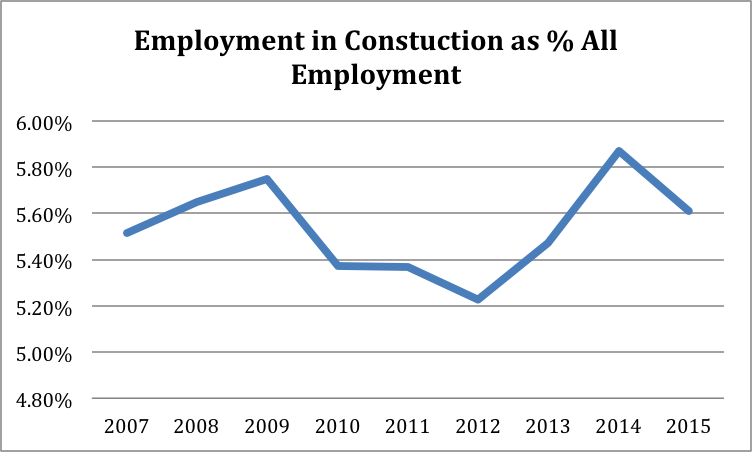In a speech on Friday, Prime Minister John Key claimed that under National, twice as many new houses were being built as under Labour. Steven Joyce followed that up by stating “Auckland’s housing problems are a regulatory issue, primarily, and [the result of] a long period of under investment in housing which was caused by a strangling of red tape.”
Are they right? Only if you are prepared to contort the statistics in the most favourable way possible.
In fact, under Labour around 600 more houses were built per quarter than under National’s term thus far. The current problem (there is no crisis) is not simply a result of red tape, the seeds were planted during National’s first term; during the Global Financial Crisis building consents dropped off a cliff. Was that the big missed opportunity to build a world-class city?
Who built what?
There are a number of different statistics you could look at; either the number, value or floor area of new residential building consents. Value isn’t really a fair comparison given what has happened to the Auckland housing market. And with floor area on the rise that seems unlikely to be a fair comparison either. So let’s stick with the number of building consents.
Clearly the Prime Minister is choosing the low point of the last Labour led Government – during the Global Financial Crisis – and comparing that with the number of consents now. On that measure he is right, residential building consents have more than doubled.
But it is a pretty selective comparison; much like the climate change deniers who for years pointed out that 1998 was really hot so therefore the warming trend had ended (at least until 2015 came along). Building consents in Auckland haven’t even returned yet to their former heights in the early 2000s so on that measure they are still well below what a significantly smaller city used to produce.
If political point-scoring is the depth of the debate, a fairer comparison would be to look at average numbers of consents during the respective terms. Over 9 years of a Labour-led government we had 2015 residential building consents per year; after 7 years National have averaged 1382 per year. If the Nats really want to catch up with the last Labour government then they have to get 37,000 consents through from now to the election.
What the comparisons tell us is that building is a shadow of what it was, and all the PM can really claim is that it’s picked up from the post-GFC nadir. This brings us to Steven Joyce’s claim that red tape is the cause of the current “non” crisis.
Is ‘red tape’ the cause?
The stark factor in the above graph is how building fell off a cliff from 2008-2012 – essentially due to the Global Financial Crisis (GFC). The lack of building during this period could be seen as perfectly understandable – the private sector developed an allergy to risk – the bankers were missing in action, trying to save themselves. This wasn’t due to red tape, it was due to the herd mentality of the market. All in all it was a missed opportunity to build more stock ahead of the immigration tsunami.
This happened right around the country, so during the GFC employment in the construction business took a hammering – and didn’t recover until the Christchurch rebuild. What happened to those workers? Were they lost to Australia or other industries? Was that the time for the Government to stimulate building through upgrading or growing the Housing NZ stock? As Shamubeel Eeaqub has pointed out, the social housing stock has been shrinking in per capita terms.
Of course back during the GFC nobody knew that Auckland housing would be such a juggernaut. But should it be that much of a surprise? While much of the recent immigration is driven by Kiwis returning home, government could reduce immigration if they wanted to. The fact that they aren’t confirms that it’s central to their growth strategy. If that is the case, then the Global Financial Crisis was the time to build Auckland in preparation for the boom to come. That standard of preemptive policy though was missed during the first term of this government.
Given the immigration is deliberate, one could then say the “non” crisis in the housing market has been self-inflicted, i.e.; the government is to blame.


